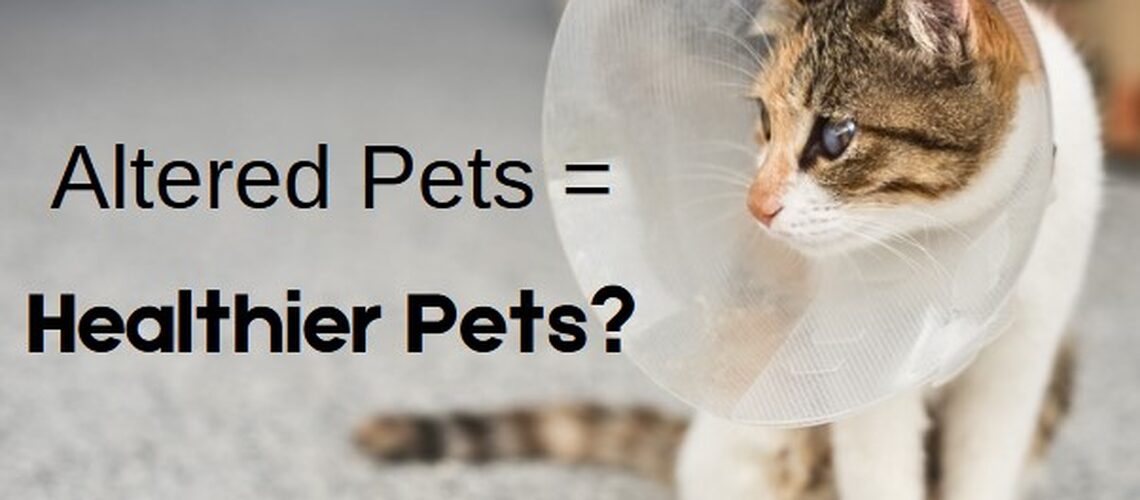Your pet’s health and longevity
The average lifespan of spayed and neutered cats and dogs is demonstrably longer than the lifespan of those not. A University of Georgia study, based on the medical records of more than 70,000 animal patients, found that the life expectancy of neutered male dogs was 13.8% longer and that of spayed female dogs was 26.3% longer. The average age of death of intact dogs was 7.9 years versus a significantly older 9.4 years for altered dogs.
Another study, conducted by Banfield Pet Hospitals on a database of 2.2 million dogs and 460,000 cats reflected similar findings, concluding that neutered male dogs lived 18% longer and spayed female dogs lived 23% longer. Spayed female cats in the study lived 39% longer and neutered male cats lived 62% longer.
The reduced lifespan of unaltered pets can, in part, be attributed to an increased urge to roam. Such roaming can expose them to fights with other animals, resulting in injuries and infections, trauma from vehicle strikes and other accidental mishaps.
A contributor to the increased longevity of altered pets is their reduced risk of certain types of cancers. Intact female cats and dogs have a greater chance of developing pyometra (a potentially fatal uterine infection) and uterine, mammary gland and other cancers of the reproductive system. Neutering male pets eliminates their risk of testicular cancer and eliminates the possibility of developing benign prostatic hyperplasia which can affect the ability to defecate.
A handful of studies may appear to challenge the health benefits of widespread spaying/neutering of companion pets by raising concerns that these surgeries may predispose some altered dogs to certain orthopedic conditions and cancers. As a result, they have caused some pet owners to question altering their pets at an early age or altering them at all. However, on closer examination, the results of these studies pertain specifically to male dogs of certain giant breeds (dogs typically weighing 90-100 pounds or more) and their conclusions should not be generalized to other breeds of dogs, or to other species, including cats.
Studies on this subject are mostly retrospective in nature, meaning they are looking at existing research data. Therefore, while they evaluate for associations between a cause and an outcome, they cannot definitely establish causality. It’s also important to understand that while a study can find something to be statistically significant, it does not always mean there is a clinically significant difference. While all study designs have benefits and challenges, there is a need for repeatable prospective studies (new research) done by a variety of researchers in various geographic locations and with significant sample sizes to provide stronger data in all aspects of this subject.
Weight gain after spay/neuter can occur in both dogs and cats because of decreased metabolism and maturation. It is important to monitor a pet’s weight following surgery and adjust their diet appropriately with the help of a veterinarian to prevent weight gain.
These are the best general recommendations that can be drawn from a thorough analysis of research currently available:
- Owned cats should be altered before they are 5 months old as they can become pregnant at 4 months of age and older.
- Owned female dogs should be spayed before they are 5 months old.
- Owned small, medium and large breed male dogs should be neutered before they are 5 months old.
- Owned giant breed male dogs who are house pets should be neutered after growth stops, between 12 to 15 months of age due to orthopedic concerns.
- Owned giant breed male dogs who roam freely should be neutered before they are 5 months old due to the population concerns of unintended breeding.
- Shelter animals should be altered prior to adoption—ideally, as early as 6 weeks old; however, some states may require waiting until the animals are 8 weeks old.
- Community cats should be altered via TNR (trap-neuter-return) at any age after 6 weeks old, although, again, some states may require waiting until the kittens are at least 8 weeks old.
Read more here.
Credit: The Humane Society of the United States
A few central AZ Spay/Neuter options:

